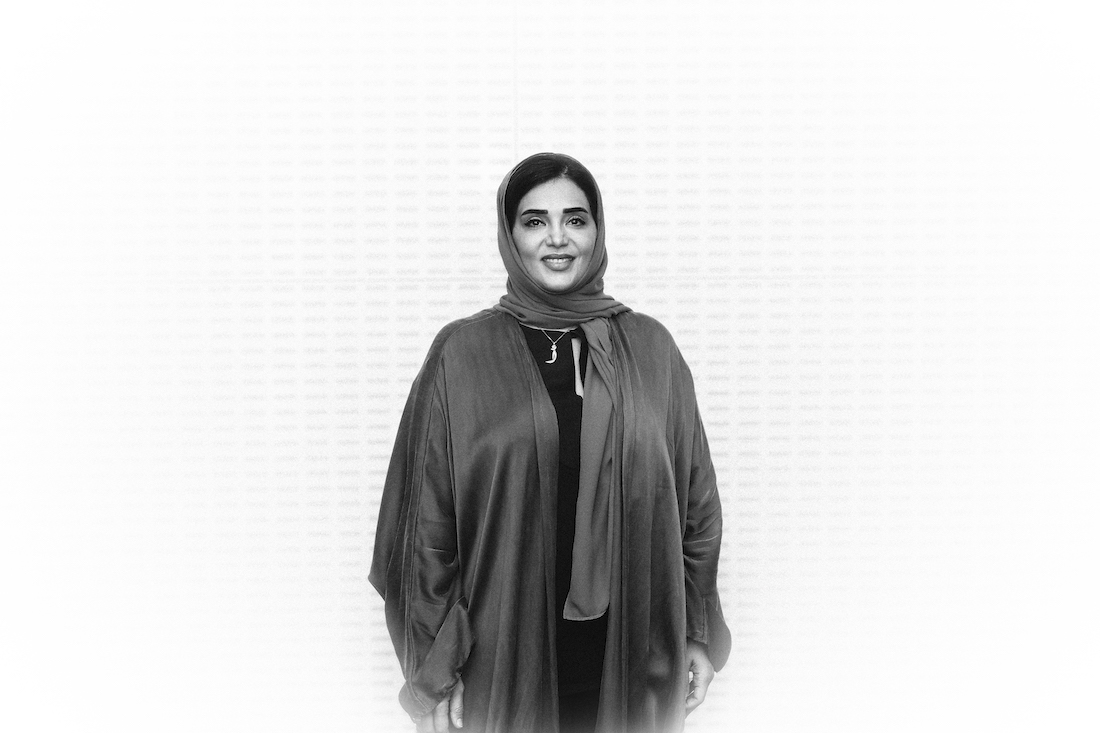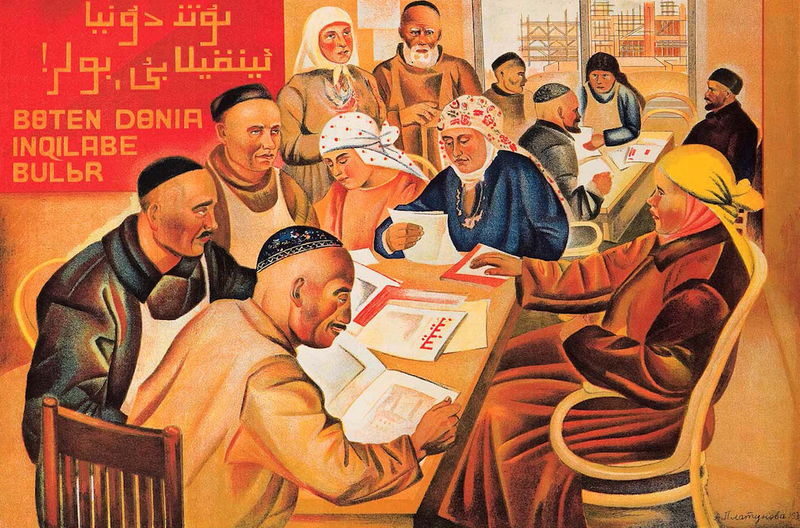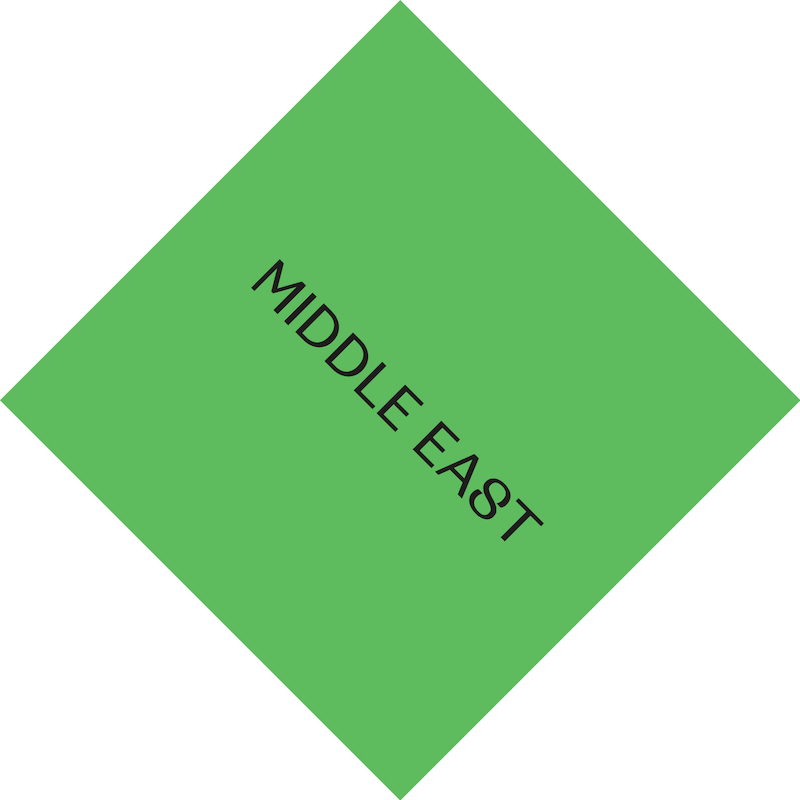
Is there really a unsurmountable conflict between Islam and feminism? How can the role Arab women play in fighting for their own voice, human rights and gender equiality be adequately represented and conceptualized? Curators of the Cultural Creative Agency Vera Traktenberg and Andrey Shental discussed these questions with Dr. Amal Malki, a postcolonial scholar and a founding dean of the College of Humanities and Social Sciences at Hamad Bin Khalifa University in Qatar.
When feminism emerged as a political movement at the beginning and then switched into a social movement, each context generated its own school of thought. Islamic feminism is one of those feminist movements that emerged in the Arab world that grounded its theory and practice on the fact that gender equality is an entrenched part of Islam. And they justified their argument within the sacred texts, and specifically within the Quran. What they have done and what was very progressive, is they went back to the text to reinterpret it. Many feminists think that the reinterpretation of the Quran is the problem, not the Quran itself, because its patriarchal reading was accomplished by men at a certain time and space who were indoctrinated by the thinking and mindset of that specific context.
What they have done as feminists is that they reinterpreted the Ayaat from a feminist perspective; that was on its own a huge achievement because the sacred text has been historically dominated by men. And men had full authority over it in all religions, as far as I know. So that was very empowering for women to break that barrier and say: we as feminists and as Muslim feminists have the right as long as we have the intellectual tools to engage with the Quran.
The term appeared in the late 1990s, and many feminist scholars were labeled as “Islamic feminists,” because they engaged with the Quran. I would mention Ziba Mir-Hosseini from Iran, Fatema Mernissi whose work predated the school of thought that was called “Islamic feminism” (she came even earlier—in the 1980s) and also Amina Wadud in the United States is a landmark in her advocacy. So the curious thing about Islamic feminism, is that it was not generated in one part of the Islamic world, but from across the globe, even in Europe—which shows the coverage of Islam and the diversity in the Islamic thought! So another empowering point that Islamic feminists have achieved was engaging with advocacy. Because, firstly, you are engaging with the text and then you are advocating a totally different school of thought in a context that is not very friendly towards reinventing religious narratives. What was empowering is that it came when political Islam was dominant, but feminists suggested another discourse that had Islamic or Quaranic texts at the heart of it. There was the political Islam, but also the other schools of thought who were saying things contrary to it.
I would love to mention one of the movements that appeared around twelve years ago, which is a product of the Islamic feminist movement—“Musawah.” It is a movement started by Muslim woman who are engaging with the sacred texts to re-introduce what Islam is, especially from a feminist perspective.
Islamic and postcolonial feminism is both a political and a social movement. So what these spin offs managed to do is to contextualize women's experiences. So, there was a focus on women's history, on what are the actual factors that contribute to shaping woman's realities and those contexts. So, for example, if we speak about Arab and Muslim woman, we know how women are perceived and treated on daily basis, how they have been impacted by patriarchal or religious interpretations. But also, it has been impacted by traditions, social norms, orientalist attitudes, and modernist attitudes too. Feminisms in the Arab world vary to the same degree that the contexts vary. And you know, in my book, I actually promoted the idea of the diversity of the experiences of Arab women. As intersectionality teaches us, even within a certain context there is diversity and multiplicity. Because we cannot speak even about Qatari women as one homogeneous entity. They are definitely not; they are not equally educated, wealthy, or exposed internationally.

So you know, when it comes to certain misrepresentations or stereotypes about Arabs and Muslims, you see that this has been embedded in the Western imagination to this day. Even the younger generation that would not know what harem means, inherited them, which is very shocking. With everything that we have been doing—writing, researching, and talking to the West—this finds its way, which shows you how strong it was. To cater to many Western readers’ curiosity for this mysterious “Other,” the Arab woman, it was historically eroticized, and her harem reimagined as a brothel. Visuals within the image served as a substantiation of this image. Mountain of images have been created about Oriental, Arab, or Muslim woman in a harem. Unfortunately, this stereotype has paved the way for other stereotypes to emerge. So the erotization of Arab women that at the beginning coincided with the romanticist international movement, has led to the politicization of this image. And those women became the submissive women, the oppressed women.
“The rescue myth,” showing the Arab woman as unassertive, compliant, and voiceless, exists up to this day. At any point, it is there and the history is there in the European popular imagination—all you need to do is conjure it up, which is very scary, right?
But how was this actually politicized? This is an interesting thing to talk about. “The rescue myth,” showing the Arab woman as unassertive, compliant, and voiceless, exists up to this day. At any point, it is there and the history is there in the European popular imagination—all you need to do is conjure it up, which is very scary, right? All of those years, we have done so much work to eradicate this kind of mentality and the stereotypes with the work of Edward Said, my work, and other people's work. But why is it so easy to play on the imagination and the emotions of masses of people and Europe by just conjuring up this image and saying: “We are going to Iraq or Afghanistan to help oppressed women there.”
Yes, it has changed because of education, studies of Orientalism, Middle Eastern Studies, women's studies. In the Middle Eastern Studies department at my college, we have the only Women Studies program in Qatar, which I established. It is an MA program in Women, Society, and Development. So these kinds of education—if they are implemented on a larger scale and in a bigger context—would make better sense. So you have the Middle Eastern Studies in the West that teaches how to read misconceptions and misrepresentations within different contexts. You have the work of amazing people: again I would repeat the name of Edward Said and his seminal book Orientalism, and Jack Shaheen whom I met and I adore. Bear in mind, both of them are Arab Christians and not Muslims. Once again, not all Muslims are Arabs, and not all Arabs are Muslims. But Said and Shaheen have done justice to this cause more than anyone else, basically. And as I told you, I strive in my work to contribute to the work that was founded by these amazing scholars who spoke to the West in their own language. So I speak and I publish in English because I am very aware of how we are perceived until this day and it is very important for me to contribute to fixing those images for the younger generations to come.
The progress happened because of intelligentsia and intellectuals who are working on the topic, and because the younger generation is able to communicate using different languages, not just English. New media and social media have helped to bring people together and facilitated a new type of reporting. For example, citizen journalism that is conducted by ordinary people who cover certain events. It appeared, during the so-called Arab Spring, in Egypt and other places. It was multimodal and the multimodality of citizen journalism was amazing, because it is audio visual, you see people you talk to people, and use different languages. So my answer is yes, there is some progress, but it's not enough.
I will give you a very concrete example. What do you know about a Palestinian women? Usually, you see them draped in black, crying over a son or a husband who has been killed. This is all you know. I have launched a podcast called “Women of the Middle East.” I love it: this is what I do as a feminist and not as a dean. That is not part of my job, it is a part of my passion. I was talking to representatives of the Palestinian woman associations and Palestinian feminists who do not look or sound like those images in the newspaper. Do you see highly intellectual, intelligent Palestinian women who are fighting partriarchy for their rights or for social rights? Political rights are always a part of their identity, they are under occupation. You can not take it away from them, it is a part of who they are as feminists. But you never hear in the West about Palestinian women and social rights; you don’t hear about their fight against child marriages, domestic violence, patriarchal costumes. So this is what I want to do with the podcast—introduce these magnificent women to the world and expose all misconceptions and misrepresentations.
Now, let me tell you about the book. I was one of the contributors to Arab Women in Arab News: Old Stereotypes and New Media. There, I wanted to compare previous Eurocentric studies with my findings. The primary objective of the former was studying visual images of Arab women straight out of photojournalism. These images are of women who were typically exotic looking, veiled, with no speaking parts. When they were given words to speak, these lines were typically supplied by Western caption writers. By contrast, in the samples of pan-Arab news that my fellow researchers and I found Arab women are often quoted, their voices contributed to the construction of the story. We call this phenomenon “source effect”: this “source,” Arabian women, are speaking for themselves. It makes them more active; Arab news exceeded most pre-internet Western coverage. So the pre-internet Western coverage was the image that you talked about—paintings or postcards. This tells you that there is a changing power of new media. Social media and citizen journalism affect people's perception. One way would be diversifying the images, the second way would be handling and correcting history, which is a very difficult to do.
I do not believe in dichotomies: the “black” and “white,” “self” and “other,” and the way we used to perceive the world is no longer valid—it is extremely problematic to see the world in those terms
Going back to your question, the fascination was often a source of modernization movements in the Arab world. One example is Muhammad Ali in Egypt. He sent Rifa’a al-Tahtawi, an Egyptian translator and intellectual, to France in an attempt to understand Christian culture. He lived in Paris for five years and upon his return opened the school of languages, and a robust translation movement started between the West and East. One or the most interesting quotes that was said about this initial fascination with the West came from Mohammed Abduh, who said: “I went to the West and saw Islam, but no Muslims; I got back to the East and saw Muslims, but not Islam.” This showed us the importance of cultural interaction and exchange.
One of the things that I am very proud of is establishment of the Translation and Interpreting Institute (TII) in 2012, before the college actually. With it, we introduced the importance of translation and interpreting. I do not believe in dichotomies: the “black” and “white,” “self” and “other.” The way we used to perceive the world is no longer valid—it is extremely problematic to see it in those terms. We are not the “self” and “other” anymore. We believe in hybridity, we believe in the middle ground, we believe in interculturalism and multiculturalism. So yes, it exists as a school of thought and people subscribe to it. I would say that the people who subscribe to it are the people who perceive “East” and “West” and this problematic dichotomy in terms of a “clash of civilizations”. And as long as we do that, it will be a battle.
I always say I am not an activist in the way that other feminists are. To be honest, I do not have the personality or strength to be like them, but I look up to them. What I do I do through education, and I hope that it will have a long-term effect. So this is why I am very proud to be a part of this beacon of enlightenment in the region.
But now we are at a stage where a woman and the government need to speak together, because this change needs to be viable and long-lasting. We do not want to do anything today that will change ten years from now, we need to document it. Qatari women have been working hard to the extent that we did not have time to stop and reflect. But initiatives like the MA program in women's studies do that, because postcolonial feminism started with documenting personal narratives. We are at a stage when women are running institutions because they want to contribute to change. But us, students, researchers, need to document our life experiences when we talk with the government. Whatever we have achieved (equality in education, equality in the job market) needs to be institutionalized. So we need to make sure that these things are valid for the next generations to come. And this is doable, as long as we have enough women who believe in the cause and have a conversation with each other.
At the moment it is difficult because of COVID-19, but we have been very active in the college, we have webinars. For instance, we have remote interpreting—it has not happened before in Qatar, especially on an academic platform. My graduates from Women Studies program started a series of webinars called Qatari Women Affairs, speaking about issues pertaining to local women, our current life, where we are very keen on affecting change. But there is still intersectionality: not all of us are the same. We look and struggle on different levels. My struggle is not like your struggle, not like other women's struggles. We have lots of researchers around us who publish about us and speak on our behalf. But this is Orientalism, right? So we have to have our voice and use it to communicate with others as well.





